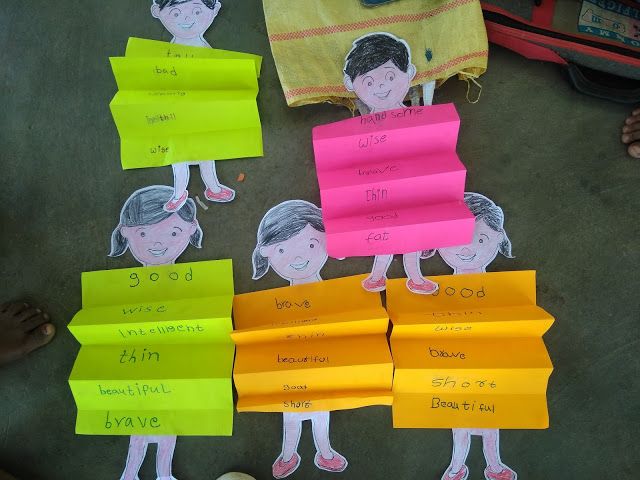Distance online learning has existed for quite some time now, but not everyone is accustomed to having their classes in front of a device. Due to circumstances that make face-to-face classes unlikely, teachers still need to make sure that the lessons’ objectives are achieved. Hence, certain adjustments are necessary to make online classes as effective as physical classes.
With the current educational situation nowadays, teachers are faced with challenges on how to make the teaching-learning experience possible. Teachers are pushed to adapt to the changes in education in these trying times from considering the curriculum guides’ contents to creating inventive and friendly online and offline tasks in online classrooms. So, here are some things teachers can keep in mind when dealing with online distance teaching and learning.

Quick Guide for Teachers in this Time of Online Classes
“I can’t meet my students physically; how can I do my job?” This is a common question many teachers around the world are asking right now. The sudden closure of schools and educational institutions has made the change of the mode of teaching into something technologically driven. Hence, here’s a quick guide for teachers who are holding their classes online.
Always go back to the curriculum guide and class syllabus
Curriculum guides and syllabuses are documents that contain all the essentials that need to be achieved in class in a specified amount of time. Perhaps now, some revisions are being done already; not all contents are included, and some topics are merged, condensed, or completely set aside. Only the most essential learning competencies are covered that would suit online instruction.
Even so, teachers are expected to adhere to CG’s and syllabuses. Following these documents makes lesson planning easier, and activities would be more focused on what is essential given the online classes restrict continuous feedback and student interaction.
Use Various Video Conference Platforms
Besides managing a social media account, perhaps most people are already making accounts on various video conference applications. Now that classrooms are transferred on the internet, we are currently exploring web meeting platforms such as Google Meet, Microsoft Teams, Zoom, Discord, and others. These platforms offer a range of features that allow participants to gather in a virtual meeting room.
Through the share screen, teachers and students can do presentations for lectures, discussions, reports, games, and other activities. Also, break out sessions for smaller group discussions can be possible. Whatever platform is applicable, make sure that students can access it and be given the opportunities to use it to the fullest.

Strengthen Asynchronous Tasks
Students are not online all the time. Problems on power and internet connectivity would always be valid reasons for them to miss live video conferences. So it is vital to strike a balance between online and offline tasks to support continuous learning.
These may be some ideas you can try on your offline class sessions:
- Encourage reading. Whether it’s reading for a requirement or reading for pleasure, teachers must encourage students to read. They can recommend texts and books for students to read or refer them to online libraries for more selections during live sessions. Of course, this must be accompanied by guide questions and pre and post-reading tasks to ensure that students comply with reading assignments before the next video conference.
- Distribute worksheets. For younger learners, worksheets are beneficial for them to keep occupied on offline days. Parents can download and print worksheets on math or letters and vocabulary and help kids practice their skills. For high schoolers, worksheets must be available to supplement and complement the discussed lessons.
- Diary or reflection logs. Having a notebook at home is essential to have so students can have an avenue to write their thought and reflections about the week’s lessons. Furthermore, it can enhance their note-taking abilities, which is needed when face-to-face lectures are possible. Kids do not have much interaction with peers and teachers at school so having their ideas written on paper promotes intrapersonal communication.
- Going physical and environmental. PE classes are challenging to hold online, a challenge for teachers to get students active and moving. So, physical tasks must be ongoing to support consistency. Teachers can let students do some simple physical tasks at home, such as warm-up exercises, jumping jacks, squats, and a little bit of jogging and running. Some sessions must be video recorded so teachers can monitor the activities of their kids.
Another thing is environmental activities. Again, a recorded task through videos or photos can be done to monitor their work, such as setting up segregation trash cans for biodegradable and non-biodegradable trash. They can also do plant care and tree planting activities. Creating posters and infographics are also suggested to promote awareness in the household and community.
Create or search for Creative Materials and Resources
Since online classes can be tedious and monotonous due to the overflow of recorded videos and PDF materials to read, creativity is necessary. For smaller kids, teachers can perform an act before the class starts. A puppet show will do to introduce the lesson. They can also bring in resource speakers who are experts on the topic to talk and share exciting works.
YouTube is a beneficial site for online teaching, so better to check for fun and appropriate videos that support the lesson. Also, teachers can set up themes every live session so kids will look forward to dressing up and be creative even if they stay in their rooms.

Modify Assessment Tools
Assessment is another thing that could stress out everyone. After lessons and activities are done, what now? Usually, tests are given to check whether learning is achieved or not, but concerns may arise with the distance.
For one, cheating can be rampant. When teachers give objective types of tests, they may refer to their notes or look for answers on the internet. Worse, they can let other people do the tests for them. To be able to address these, teachers often do tests on live sessions, requiring kids to turn on their cameras. They also set a time limit for each item so students won’t have enough time to search for answers elsewhere. However, there is no guarantee that the results of the tests would be fair and accurate.
One thing to consider is to modify the types of tests. Reading comprehension items can be a useful tool so that kids would focus on their tests. Since answers are just found in the text, it is difficult for them to look it up in sources. Another thing is to make objective items situational. Instead of asking directly for a term, teachers can put it in context and turn simple fill in the blank items situational. This is the same with math word problems. Lastly, teachers can always ask essay questions. It may be hard and long to mark, but all competencies can be covered in essay tests.
Check on Students Regularly
All parties – teachers and students – are adjusting to this new normal in education. So, it is necessary to check on students’ conditions regularly. Some students may not be privileged enough to join online sessions regularly, so it is advised to compromise and agree on things that can be done for them. Also, looking at screens for long periods can be detrimental to eye health, so asynchronous tasks must be given to them from time to time.
The point is to check each other’s’ mental and emotional state regularly. Now is not the time to impose rules and policies that do not promote equity and well-being, so teachers must periodically check on their students and think of ways to enhance instruction given limited movement and resources. Same thing with students, too. Teachers need time and space to check submissions and create lessons, so students also need to check on their teachers.
Online Classes on the go
The popularity of online classes these days has dramatically impacted the state of everyone. Hence, as facilitators of learning, teachers need creative and innovative ways to deal with online instruction demands. Anyway, when all troubles pass, they are already equipped with knowledge and skills for more flexible learning and teaching experience.
Written exclusively for our company by Karen T
Source: CoolMambo.com


